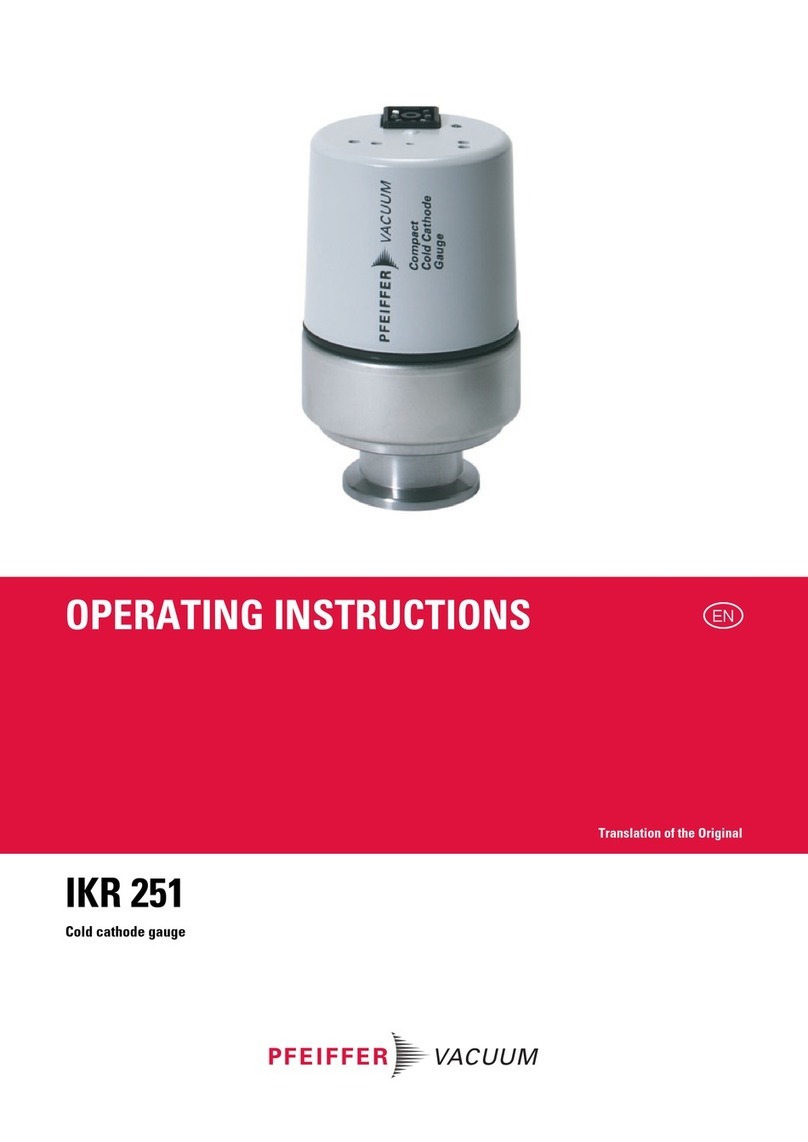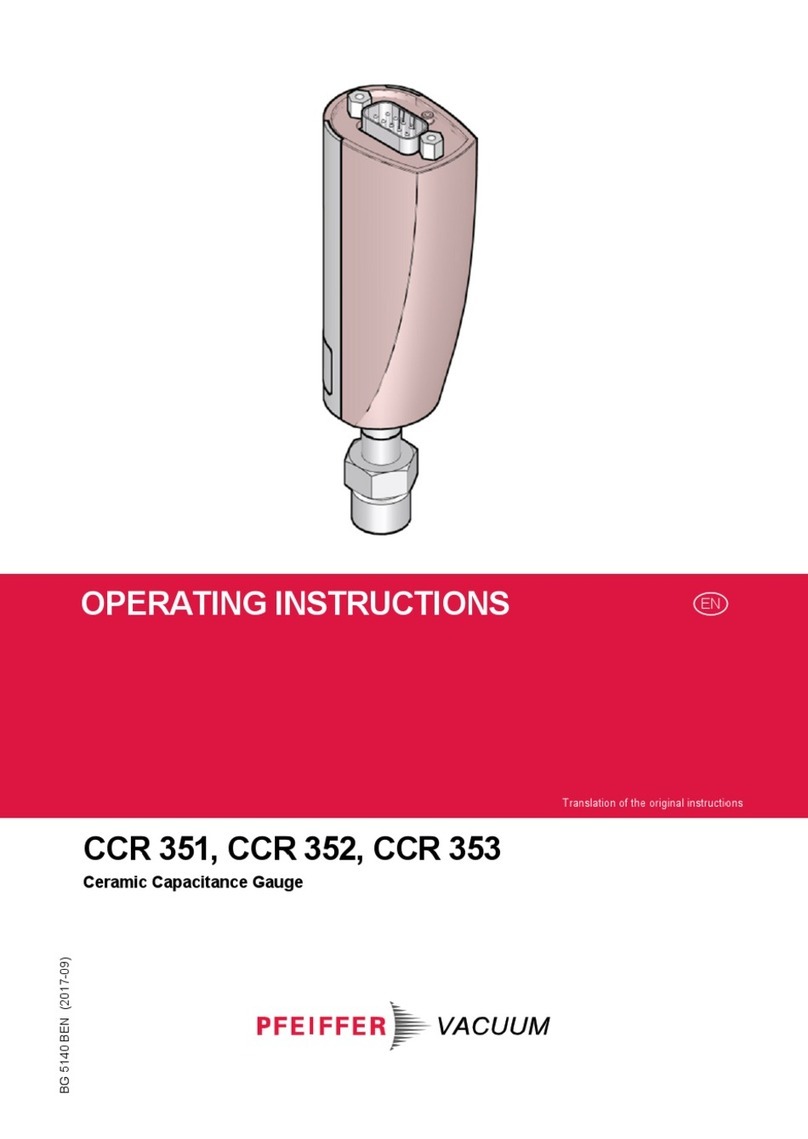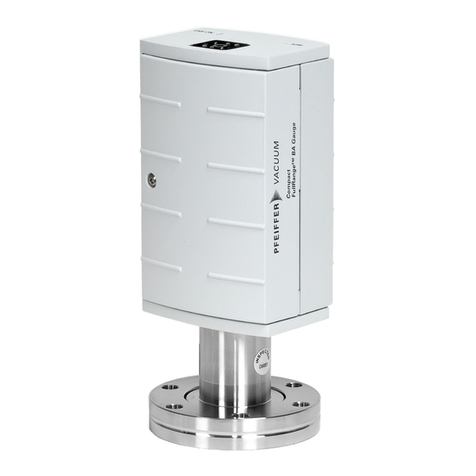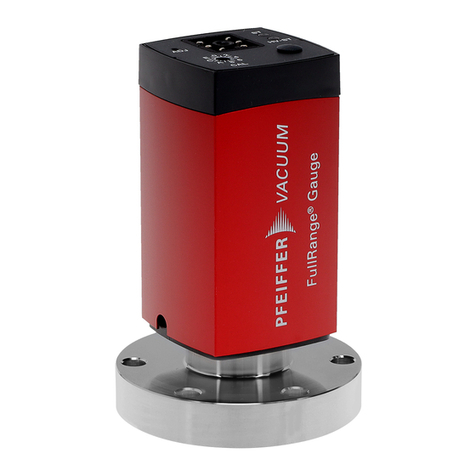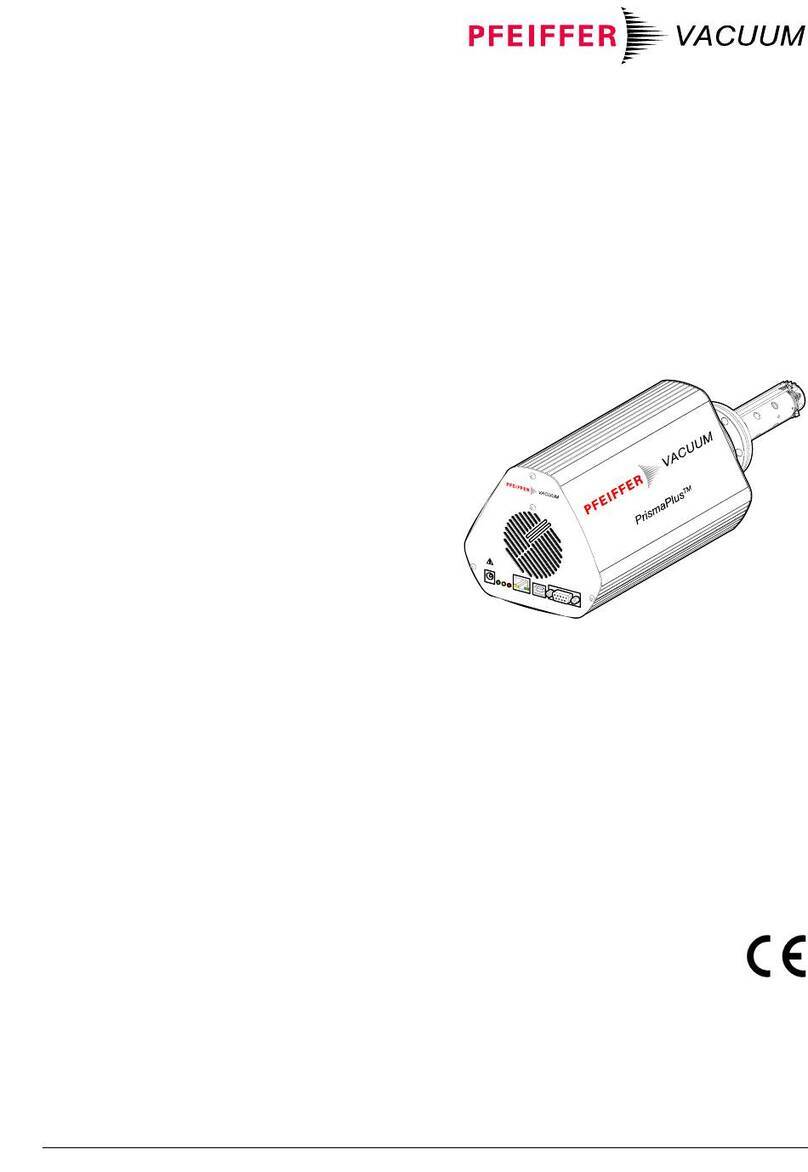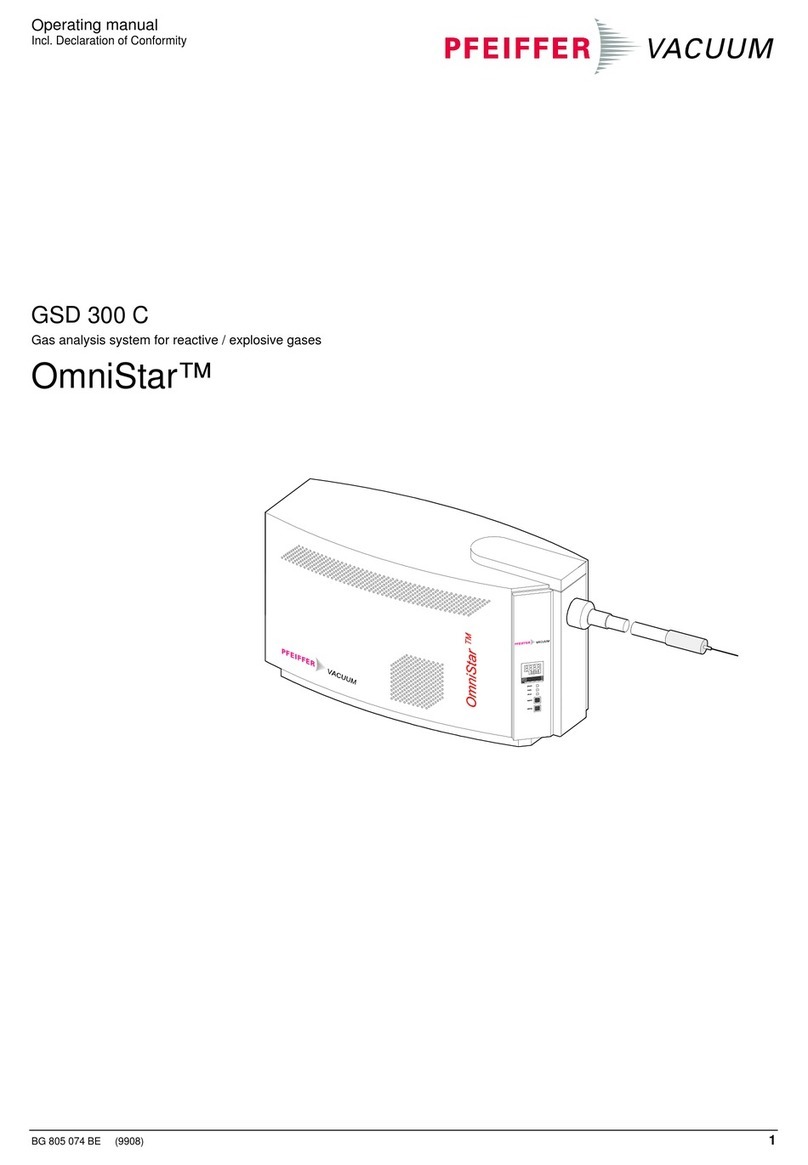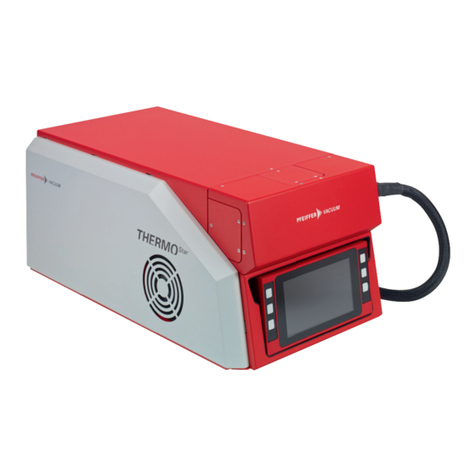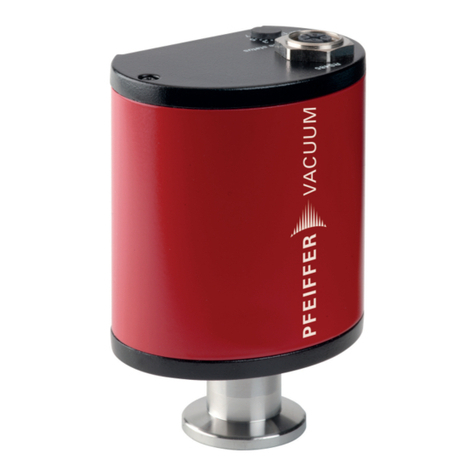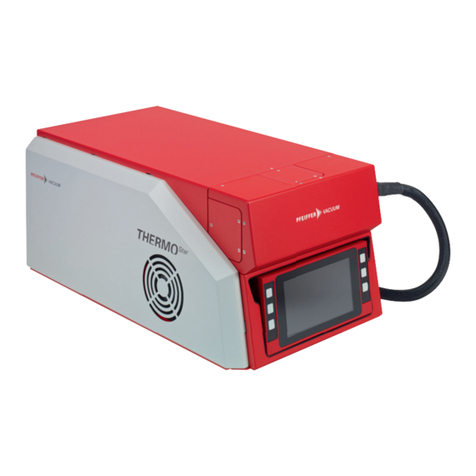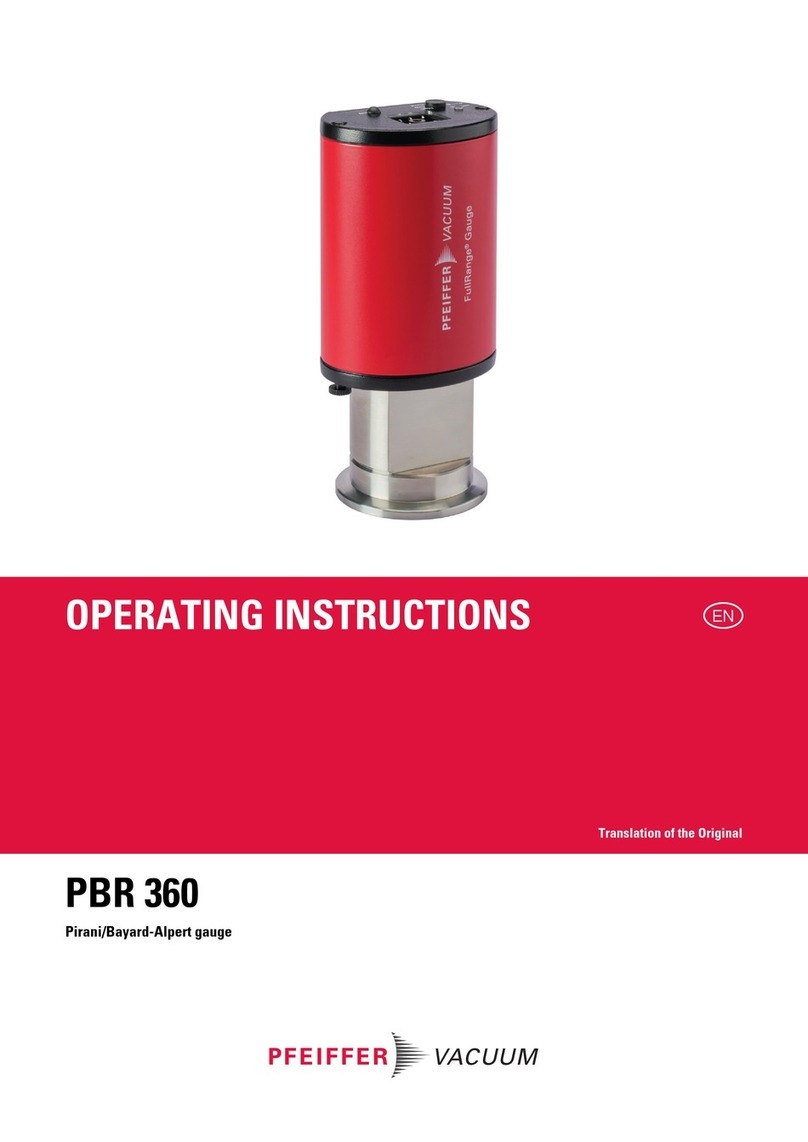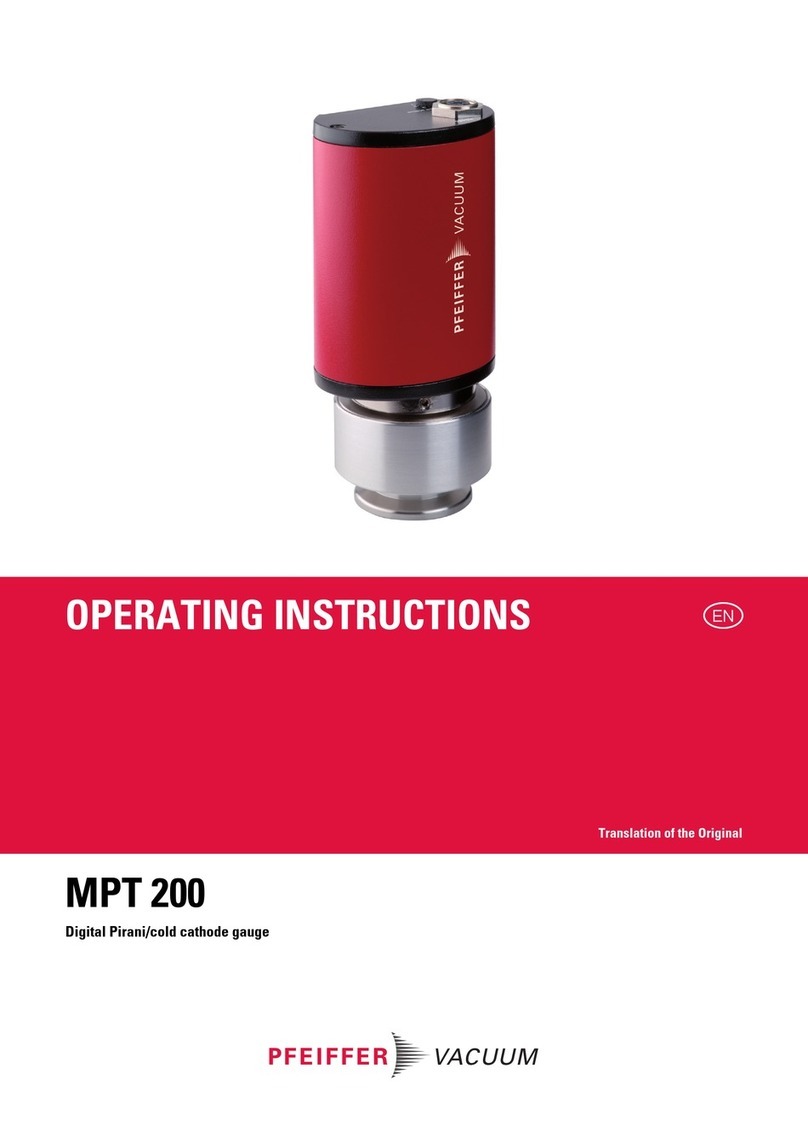
BG 805 180 BE / D (2010-04)
A PASSION
FOR PERFECTION
PCR 260
Compact Pirani Capacitance Gauge
Operating Instructions
Product Identification
In all communications with Pfeiffer Vacuum, please specify
the information given on the product nameplate. For conven-
ient reference copy that information into the space provided
below.
Typ:
No:
F-No:
V W
Pfeiffer Vacuum, D-35614 Asslar
Validity
This document applies to products with the following part
numbers:
PT R26 850 (DN 16 ISO-KF)
PT R26 851 (DN 16 CF-F)
The part number (No) can be taken from the product
nameplate.
If not indicated otherwise in the legends, the illustrations in
this document correspond to DN 16 ISO-KF vacuum con-
nection. They apply to other vacuum connections by analogy.
We reserve the right to make technical changes without prior
notice.
All dimensions are indicated in mm.
Intended Use
The Compact Pirani Capacitance Gauge PCR 260 has been
designed for vacuum measurement of gases in the pressure
range of 5×10-4 … 1500 mbar.
It must not be used for measuring flammable or combustible
gases in mixtures containing oxidants (e.g. atmospheric oxy-
gen) within the explosion range.
The gauge can be operated in connection with a Pfeiffer
Vacuum controller or with another evaluation unit.
Functional Principle
The PCR gauge is a combination gauge consisting of a
Pirani sensor and a capacitive diaphragm sensor. Both
sensors are constantly active.
At low pressures, only the signal of the Pirani sensor is used
for pressure measurement; at high pressures, only the signal
of the capacitive diaphragm sensor. To determine the output
signal in the intermediate range, both signals are used
proportional to the pressure.
Safety
Symbols Used
DANGER
Information on preventing any kind of physical injury.
WARNING
Information on preventing extensive equipment and en-
vironmental damage.
Caution
Information on correct handling or use. Disregard can lead
to malfunctions or minor equipment damage.
Personnel Qualifications
Skilled personnel
All work described in this document may only be carried
out by persons who have suitable technical training and
the necessary experience or who have been instructed by
the end-user of the product.
General Safety Instructions
•Adhere to the applicable regulations and take the ne-
cessary precautions for the process media used.
Consider possible reactions with the product materials.
Consider possible reactions (e.g. explosion) of the
process media due to the heat generated by the product.
•Adhere to the applicable regulations and take the ne-
cessary precautions for all work you are going to do and
consider the safety instructions in this document.
•Before beginning to work, find out whether any vacuum
components are contaminated. Adhere to the relevant
regulations and take the necessary precautions when
handling contaminated parts.
Communicate the safety instructions to all other users.
Liability and Warranty
Pfeiffer Vacuum assumes no liability and the warranty
becomes null and void if the end-user or third parties
•disregard the information in this document
•use the product in a non-conforming manner
•make any kind of changes (modifications, alterations etc.)
to the product
•use the product with accessories not listed in the product
documentation.
The end-user assumes the responsibility in conjunction with
the process media used.
Gauge failures due to contamination or wear and tear, as
well as expendable parts (filament), are not covered by the
warranty.
Technical Data
Measurement principle
100 mbar 1) … 1500 mbar
5×10-4 … 1 mbar
1 … 100 mbar 1)
capacitance diaphragm
sensor
thermal conductance
according to Pirani
crossover range
Measurement range
(air, O2, CO, N2)
5×10-4 … 1500 mbar
Accuracy (N2)
1×10-3 … 50 mbar
50 … 950 mbar
Atmospheric pressure
(950 … 1050 mbar)
±15% of reading
±5% of reading
±2.5% of reading
Repeatability (N2)
±2% of reading
(1×10-3 … 1100 mbar)
Output signal
(measurement signal)
Voltage range
0 … +9.0 V
Mesasurement range +2.2 … +8.68 V
Voltage vs. pressure 1 V/decade, logarithmic
Output impedance 2 × 4.7 Ω, short circuit-proof
Minimum load impedance 10 kΩ
Response time 10 ms
Gauge identification resistor 3 kΩbetween pin 1
and pin 5 of electrical
connector
(→"Electrical Connection")
HV Adjustment at <<10-4 mbar
(with potentiometer <HV>)
Supply
DANGER
The gauge must only be connected to power
supplies, instruments or control devices that
conform to the requirements of a grounded pro-
tective extra-low voltage (SELV). The connection
to the gauge has to be fused
Supply voltage at gauge +15 … +30 VDC
(ripple ≤1 Vpp)
Power consumption ≤2.5 W
Fuse to be connected 1 AT
Electrical connection Hirschmann connector
type GO 6, 6 pin, male
Sensor cable 5 pins plus shielding
Cable length ≤150 m (5×0.25 mm2)
≤200 m (5×0.34 mm2)
Grounding concept
Vacuum connection to
signal ground
(→"Power Connection")
connected via 1 MΩ
Materials exposed to vacuum
Vacuum connection
Pirani filament
Feedthrough
Orifice
Other materials
stainless steel
tungsten
glass
stainless steel
Ni, Cu, NiFe, SnAg, glass,
Al2O3(>99.5%), AgPd
Internal volume
DN 16 ISO-KF
DN 16 CF-F
≈6 cm3
≈8 cm3
Admissible pressure ≤5 bar (absolute)
Admissible Temperatures
Storage
Operation (ambient)
Bake-out 2)
Filament temperature
–20 … +65 °C
+10 … +50 °C
≤80 °C
<160 °C
Relative humidity ≤80% at temperatures
≤+31 °C, decreasing to 50%
at +40 °C
Mounting orientation any
Use indoors only
altitudes up to 2000 m NN
Protection category IP 40
1) Crossover range for air, O2, CO and N210 mbar,
100 mbar in heavy gases.
2) Temperature at vacuum connection with horizontal moun-
ting orientation. During bake-out, measurement range,
accuracy, and repeatability may deviate from specifi-
cations.

